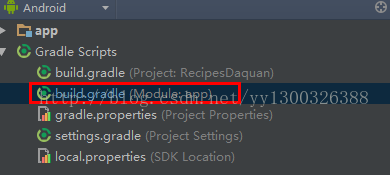編輯:關於Android編程
今天在android項目中使用AES對數據進行加解密,遇到了很多問題,網上也找了很多資料,也不行。不過最後還是讓我給搞出來了,這裡把這個記錄下來,不要讓別人走我的彎路,因為網上絕大多數的例子都是行不通的。好了,接下來開始講解
1、Aes工具類
package com.example.cheng.aesencrypt;
import android.text.TextUtils;
import java.security.NoSuchAlgorithmException;
import java.security.SecureRandom;
import javax.crypto.Cipher;
import javax.crypto.KeyGenerator;
import javax.crypto.SecretKey;
import javax.crypto.spec.IvParameterSpec;
import javax.crypto.spec.SecretKeySpec;
/**
* class description here
*
* @author cheng
* @version 1.0.0
* @since 2016-11-02
*/
public class Aes {
private static final String SHA1PRNG = "SHA1PRNG"; // SHA1PRNG 強隨機種子算法, 要區別4.2以上版本的調用方法
private static final String IV = "qws871bz73msl9x8";
private static final String AES = "AES"; //AES 加密
private static final String CIPHERMODE = "AES/CBC/PKCS5Padding"; //algorithm/mode/padding
/**
* 加密
*/
public static String encrypt(String key, String cleartext) {
if (TextUtils.isEmpty(cleartext)) {
return cleartext;
}
try {
byte[] result = encrypt(key, cleartext.getBytes());
return parseByte2HexStr(result);
} catch (Exception e) {
e.printStackTrace();
}
return null;
}
/**
* 加密
*/
public static byte[] encrypt(String key, byte[] clear) throws Exception {
byte[] raw = getRawKey(key.getBytes());
SecretKeySpec skeySpec = new SecretKeySpec(raw, AES);
Cipher cipher = Cipher.getInstance(CIPHERMODE);
cipher.init(Cipher.ENCRYPT_MODE, skeySpec, new IvParameterSpec(new byte[cipher.getBlockSize()]));
byte[] encrypted = cipher.doFinal(clear);
return encrypted;
}
/**
* 解密
*/
public static String decrypt(String key, String encrypted) {
if (TextUtils.isEmpty(encrypted)) {
return encrypted;
}
try {
byte[] enc = parseHexStr2Byte(encrypted);
byte[] result = decrypt(key, enc);
return new String(result);
} catch (Exception e) {
e.printStackTrace();
}
return null;
}
/**
* 解密
*/
public static byte[] decrypt(String key, byte[] encrypted) throws Exception {
byte[] raw = getRawKey(key.getBytes());
SecretKeySpec skeySpec = new SecretKeySpec(raw, AES);
Cipher cipher = Cipher.getInstance(CIPHERMODE);
cipher.init(Cipher.DECRYPT_MODE, skeySpec, new IvParameterSpec(new byte[cipher.getBlockSize()]));
byte[] decrypted = cipher.doFinal(encrypted);
return decrypted;
}
/**
* 生成隨機數,可以當做動態的密鑰
* 加密和解密的密鑰必須一致,不然將不能解密
*/
public static String generateKey() {
try {
SecureRandom secureRandom = SecureRandom.getInstance(SHA1PRNG);
byte[] key = new byte[20];
secureRandom.nextBytes(key);
return toHex(key);
} catch (NoSuchAlgorithmException e) {
e.printStackTrace();
}
return null;
}
/**
* 對密鑰進行處理
*/
public static byte[] getRawKey(byte[] seed) throws Exception {
KeyGenerator kgen = KeyGenerator.getInstance(AES);
//for android
SecureRandom sr = null;
// 在4.2以上版本中,SecureRandom獲取方式發生了改變
if (android.os.Build.VERSION.SDK_INT >= 17) {
sr = SecureRandom.getInstance(SHA1PRNG, "Crypto");
} else {
sr = SecureRandom.getInstance(SHA1PRNG);
}
// for Java
// secureRandom = SecureRandom.getInstance(SHA1PRNG);
sr.setSeed(seed);
kgen.init(128, sr); //256 bits or 128 bits,192bits
//AES中128位密鑰版本有10個加密循環,192比特密鑰版本有12個加密循環,256比特密鑰版本則有14個加密循環。
SecretKey skey = kgen.generateKey();
byte[] raw = skey.getEncoded();
return raw;
}
/**
* 二進制轉字符
*/
public static String toHex(byte[] buf) {
if (buf == null)
return "";
StringBuffer result = new StringBuffer(2 * buf.length);
for (int i = 0; i < buf.length; i++) {
appendHex(result, buf[i]);
}
return result.toString();
}
private static void appendHex(StringBuffer sb, byte b) {
sb.append(IV.charAt((b >> 4) & 0x0f)).append(IV.charAt(b & 0x0f));
}
/**
* 將二進制轉換成16進制
*
* @param buf
* @return
*/
public static String parseByte2HexStr(byte buf[]) {
StringBuilder sb = new StringBuilder();
for (int i = 0; i < buf.length; i++) {
String hex = Integer.toHexString(buf[i] & 0xFF);
if (hex.length() == 1) {
hex = '0' + hex;
}
sb.append(hex.toUpperCase());
}
return sb.toString();
}
/**
* 將16進制轉換為二進制
*
* @param hexStr
* @return
*/
public static byte[] parseHexStr2Byte(String hexStr) {
if (hexStr.length() < 1)
return null;
byte[] result = new byte[hexStr.length() / 2];
for (int i = 0; i < hexStr.length() / 2; i++) {
int high = Integer.parseInt(hexStr.substring(i * 2, i * 2 + 1), 16);
int low = Integer.parseInt(hexStr.substring(i * 2 + 1, i * 2 + 2),
16);
result[i] = (byte) (high * 16 + low);
}
return result;
}
}
2、mainActivity和layout文件如下:
package com.example.cheng.aesencrypt;
import android.os.Bundle;
import android.support.v7.app.AppCompatActivity;
import android.view.View;
import android.widget.EditText;
import android.widget.TextView;
import android.widget.Toast;
public class MainActivity extends AppCompatActivity {
private EditText mInputET;
private TextView mShowEncryputTV;
private TextView mShowInputTV;
private static final String PASSWORD_STRING = "12345678";
@Override
protected void onCreate(Bundle savedInstanceState) {
super.onCreate(savedInstanceState);
setContentView(R.layout.activity_main);
mInputET = (EditText) findViewById(R.id.ase_input);
mShowEncryputTV = (TextView) findViewById(R.id.show_oringe_encrypt);
mShowInputTV = (TextView) findViewById(R.id.show_ase_encrypt);
}
/**
* 加密
*
* @param view
*/
public void encrypt(View view) {
String inputString = mInputET.getText().toString().trim();
if (inputString.length() == 0) {
Toast.makeText(this, "請輸入要加密的內容", Toast.LENGTH_SHORT).show();
return;
}
String encryStr = Aes.encrypt(PASSWORD_STRING, inputString);
mShowInputTV.setText(encryStr);
}
/**
* 解密
*
* @param view
*/
public void decrypt(View view) {
String encryptString = mShowInputTV.getText().toString().trim();
if (encryptString.length() == 0) {
Toast.makeText(this, "解密字符串不能為空", Toast.LENGTH_SHORT).show();
return;
}
String decryStr = Aes.decrypt(PASSWORD_STRING, encryptString);
mShowEncryputTV.setText(decryStr);
}
}
layout文件
<?xml version="1.0" encoding="utf-8"?> <LinearLayout xmlns:android="http://schemas.android.com/apk/res/android" xmlns:tools="http://schemas.android.com/tools" android:id="@+id/activity_main" android:layout_width="match_parent" android:layout_height="match_parent" android:gravity="center_vertical" android:orientation="vertical" android:paddingBottom="@dimen/activity_vertical_margin" android:paddingLeft="@dimen/activity_horizontal_margin" android:paddingRight="@dimen/activity_horizontal_margin" android:paddingTop="@dimen/activity_vertical_margin" tools:context="com.example.cheng.aesencrypt.MainActivity"> <EditText android:id="@+id/ase_input" android:layout_width="match_parent" android:layout_height="wrap_content" android:hint="輸入要加密的內容" /> <Button android:layout_width="wrap_content" android:layout_height="wrap_content" android:onClick="encrypt" android:text="點擊進行ASE加密" /> <TextView android:id="@+id/show_ase_encrypt" android:layout_width="match_parent" android:layout_height="wrap_content" android:layout_marginTop="10dp" android:text="顯示加密後的內容" /> <Button android:layout_width="wrap_content" android:layout_height="wrap_content" android:onClick="decrypt" android:text="點擊進行ASE解密" /> <TextView android:id="@+id/show_oringe_encrypt" android:layout_width="wrap_content" android:layout_height="wrap_content" android:layout_marginTop="10dp" android:text="顯示加密後的內容" /> </LinearLayout>
3、最後的效果如下:
1)、是一個輸入框,輸入鑰加密的字符串;
2)、點擊“AES加密”按鈕後生產的加密字符串;
3)、點擊“AES解密”按鈕後,對加密字符串進行解密,然後在3處看到解密後的字符串,可以看到加密字符串和解密字符串相同,所以AES加解密成功了

4、總結
要用真機測試,模擬器是不行的,具體原因沒去研究;
點擊獲取本例的github地址:
也可以通過android studio直接git下來,git地址為https://github.com/chenguo4930/AndroidAES.git
其中也還有DES、RSA的加解密demo的github地址為https://github.com/chenguo4930/EncodeDemo
git地址為: https://github.com/chenguo4930/EncodeDemo.git
以上就是本文的全部內容,希望對大家的學習有所幫助,也希望大家多多支持本站。
 Android中的android:layout_weight使用詳解
Android中的android:layout_weight使用詳解
在使用LinearLayout的時候,子控件可以設置layout_weight。layout_weight的作用是設置子空間在LinearLayout的重要度(控件的大小
 解決Android Studio加載第三方jar包,出現包重復加載的問題:
解決Android Studio加載第三方jar包,出現包重復加載的問題:
通過Maven中央庫添加第三方jar包的時候,出現了重復加載jar包的問題,解決辦法很簡單去掉一個不讓它去加載就OK了 一、錯誤 com.android.ide.co
 Android自定義漂亮的圓形進度條
Android自定義漂亮的圓形進度條
這幾天對Android中實現畫圓弧及圓弧效果中所實現的效果進行了修改,改為進度圓心進度條,效果如圖所示TasksCompletedView.java 代碼如下import
 Android ListView構建支持單選和多選的投票項目
Android ListView構建支持單選和多選的投票項目
引言我們在android的APP開發中有時候會碰到提供一個選項列表供用戶選擇的需求,如在投票類型的項目中,我們提供一些主題給用戶選擇,每個主題有若干選項,用戶對這些主題的